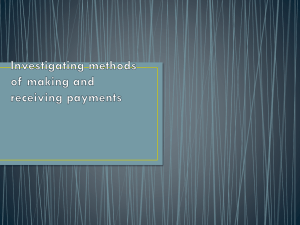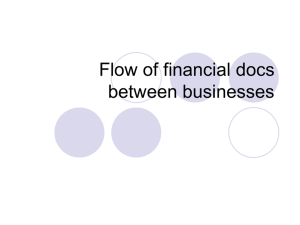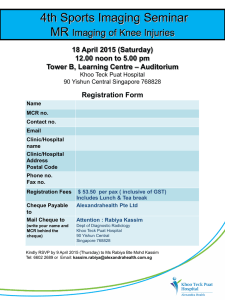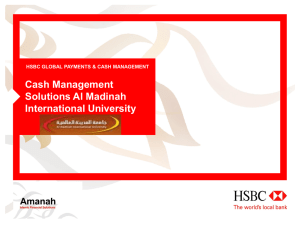Source Documents
advertisement
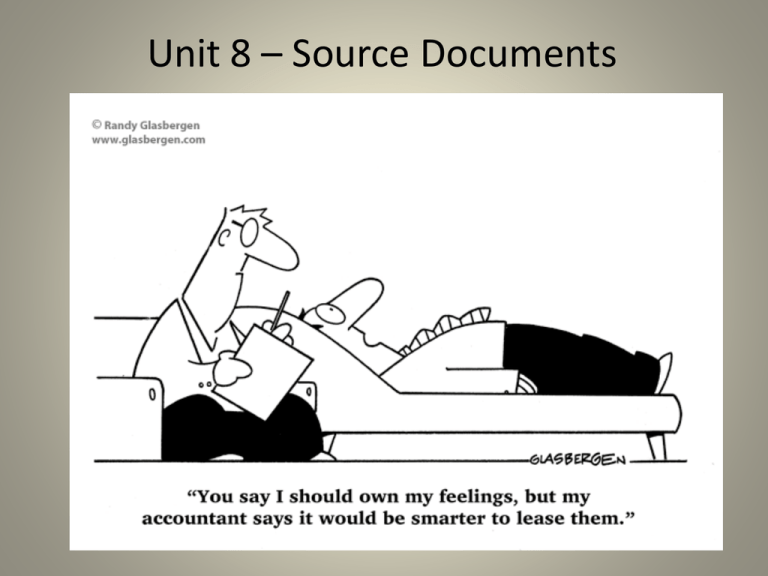
Unit 8 – Source Documents Source Document • Is any business form that serves as the original source of information that a transaction has occurred. • A source document must be prepared for every business transaction. – A concrete object that proves that a business transaction did, in fact, occur. – At least two copies: the seller and the buyer receive an exact copy Source Documents continued… • Number of business transactions are started outside the accounting department. – Initiated by owner, sales-people, department heads, managers, etc. • Accounting departments informed of transactions – Business papers sent to them = Source document • Source Document: is a business paper that shows the nature of a transaction and provides all of the information needed to account for it properly. Source Document continued… • Almost every accounting entry should be based on a source document. • A company is required to keep source documents on file. – Used as reference purposes (locating errors) – Factual evidence (verify transactions) – Proof – records prepared accurately & honestly. #1 – Cash Sales Slips • is prepared for all cash sales by a business. • GST and PST shown on example on page 136 – will not be journalizing and posting tax amounts until later in the book. • Often generated by sales clerk by hand. Page 136 – Another Example #1 – Cash Sales Slips Cont. • Three copies are prepared. (original & two copies) – Copy 1: Given to the customer – Copy 2: Accounting Department of seller (record the transaction) – Copy 3: Numerical file: record of all cash sales. Example Entry (Seller’s accountant) – Copy #2 - In actual practice, groups of sales slips would be combined and an entry similar to the following one would be made to record the total of the group of slips. General Journal Date May Particulars Page: P.R. Debit 21 Cash Credit 46000 Sales 46000 Sales slip 43785 Entry (Buyer’s accountant) – Copy #1 General Journal Date May Particulars 21 Maintenance Expense Cash Paid for painting services Page: P.R. Debit Credit 46000 46000 #2 – Sales Invoices • is the bill completed by the seller and given to the buyer as a record of a credit sale. • Credit sale – one for which the customer agrees to pay at a later date. • “Charge sale, “sale on account” • Often generated by a computer #2 – Sales Invoices Cont. • Selling company makes several copies of the invoice: – Copies 1 & 2: Sent to the customer – Copy 3: Accounting Department of seller (record the transaction) – Copy 4: Sales department (record of sale) Example – Page 138-39 Entry (Buyer’s accountant) – Copy #1 General Journal Date Jun. Particulars 1 Page: P.R. Debit Consulting Services Expense Credit 235400 Acc. Pay./Sanne Consulting 235400 Purchase Invoice 5870 Entry (Seller’s accountant) – Copy #3 General Journal Date Jun. Particulars 1 Acc. Rec./Warrendon Sports Consulting Revenue Invoice 5870, consulting services, net 30 days Page: P.R. Debit Credit 235400 235400 #3 – Purchase Invoices - Is the bill received by the purchaser as proof of a purchase on account. Example – Page 138-39 • Sanne consultants – Sales invoice (seller) • Warrendon Sports Ltd. – Purchase invoice (buyer) – Copies 1 and 2 are records of what Warrendon has purchased and indicate how much is owed to the seller General Journal Date Jun. Particulars 1 Training Expense Acc. Pay./Sanne Consulting Purchased consulting services, Invoice 5870, net 30 days. Page: P.R. Debit Credit 235400 235400 #4 – Cheques • Cheques Issued: are issued to make cash purchases and to pay bills. • Original (sent to Sanne Consultants) • Copy (kept by Warrendon Sports) – Two Parts • Cheque itself • Attached portion (details on why cheque was written) Example - Page 140 • Cheque copy used by Warrendon’s accountant to record this entry: General Journal Date Jun. Particulars 30 Acc. Pay./Sanne Consultants Cash Issued Cheque 1624 to pay Invoice 5870 Page: P.R. Debit Credit 235400 235400 #4 – Cheques • Cheques Received: are received as payments for amounts owed or when customers buy something for cash. • When received by Sanne Consultants. – Cheque separated from record portion. – Cheque endorsed with a restrictive endorsement (deposit only to the account of Sanne Consultants) – Immediately deposited in Sanne Consultants’ bank account • Endorsement: the signature placed on the back of a cheque by the person or company depositing the cheque. • Restrictive Endorsement: is used to control with will happen to the funds from the cheque. Example – Page 140 • Record portion of the cheque is used to prepare the following entry: General Journal Date Jul. Particulars 2 Cash Acc. Receivable/Warr. Sports Page: P.R. Debit Credit 235400 235400 Received Cheque 1624 for Invoice 5870 • Companies that receive a large number of cheques – create a list – cheques immediately deposited in the bank, list used by the accountant to prepare the journal entries. Bank Source Documents • Bank credit memo – gives notice of an increase in a customer’s bank account. – Ex: Interest or other amounts are added to the account • Bank debit memo – gives notice of a decrease in a customer’s bank account. – Ex: Interest on a loan deducted from a company’s account. Other Source Document Facts • Pre-numbered Source Documents – Designed to prevent errors and losses due to theft or to the use of false documents – Are kept on file and must be made available to persons who have the authority to check a company’s records. • Owners & managers of the business • Outside accountants hired to check the records • Federal income tax and GST personnel (Canada customs and revenue agency) • Provincial sales tax and Ministry of Labour personnel • Court officials Other Source Document Facts • Source Documents – Evidence for Transactions – Provide evidence that a transaction has actually occurred. – Company Accounting record checks • Source documents (cash sales slips, sales invoices, and purchase invoices provide proof that the transactions did happen) • Comparing source document copies of both seller and buyer. (info should be the same) The Principle of Objectivity • Requires objective evidence to support the value used to record transactions. – Source documents help accountant satisfy this principle. (provide verifiable evidence to support the value placed on transactions) ** A company could overstate the value of its assets by recording them at a high value. - Company would appear more valuable than it really is. Summary Source Document Business Transaction Cash sales slip Bank debit memo Bank credit memo Sales invoice Purchase invoice Cheque issued Cash sale to customer Deduction from a company’s bank account Increase in a company’s bank account Sale on account to a customer Purchase on account by the business Payment made to a creditor (account payable) or for a cash purchase Payment received from a customer (account receivable) Cheque received

